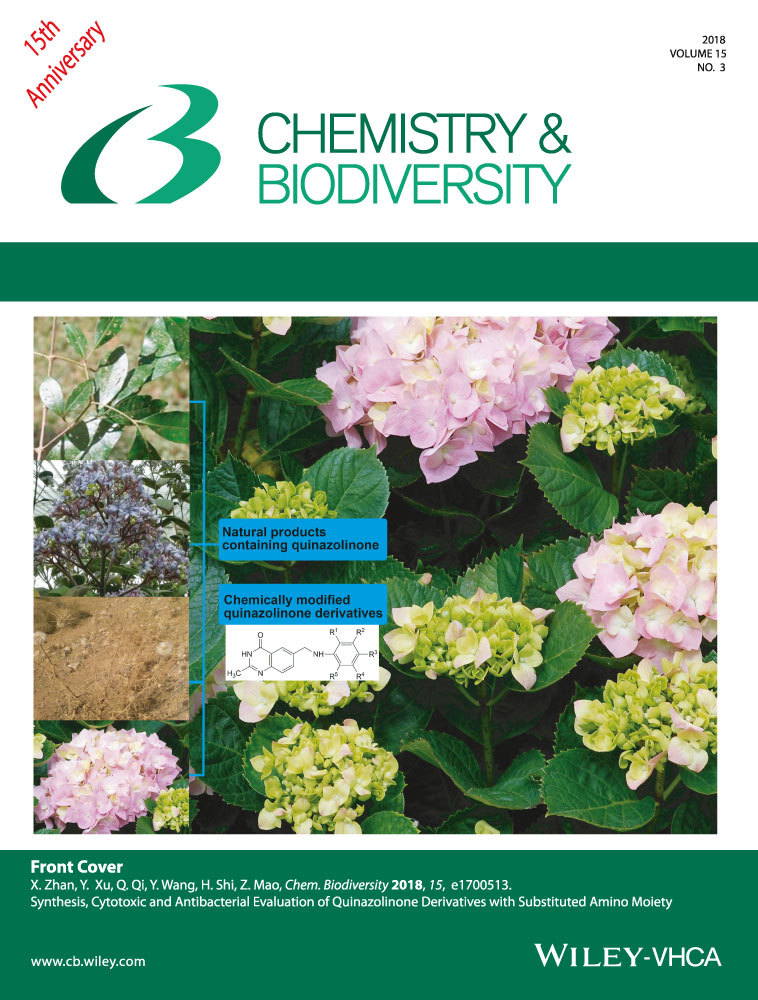Oplopane Sesquiterpenes from Ligularia knorringiana and Their Anti-Complementary Activity
Abstract
Three new oplopane sesquiterpenes, knorringianalarins D – F (1 – 3, respectively), and five known analogues (4 – 8, respectively), were isolated from the roots and rhizomes of Ligularia knorringiana. The structures of three new compounds were identified as 4-acetoxy-11α,12-epoxy-2β-hydroxy-3β-(2-methylbutyryloxy)-9α-(4-methylsenecioyloxy)oplop-10(14)-ene (1), 3β,4-diacetoxy-9α-(4-acetoxy-4-methylsenecioyloxy)-11α,12-epoxy-8α-(2-methylbutyryloxy)oplop-10(14)-ene (2), and (1R,5R,6R,7R,9R)-5,9,11-trihydroxy-4,15-dinoroplop-10(14)-en-3-one (3) based on spectroscopic methods including 1D- and 2D-NMR, mass spectrometry, and CD spectroscopy techniques. All compounds were evaluated for their anti-complementary activity on the classical pathway of the complement system in vitro. Among which, three oplopane sesquiterpenes (3, 7, and 8) exhibited better anti-complementary effects with CH50 values ranging from 0.33 to 0.89 mm, which are plausible candidates for developing potent anti-complementary agents.





